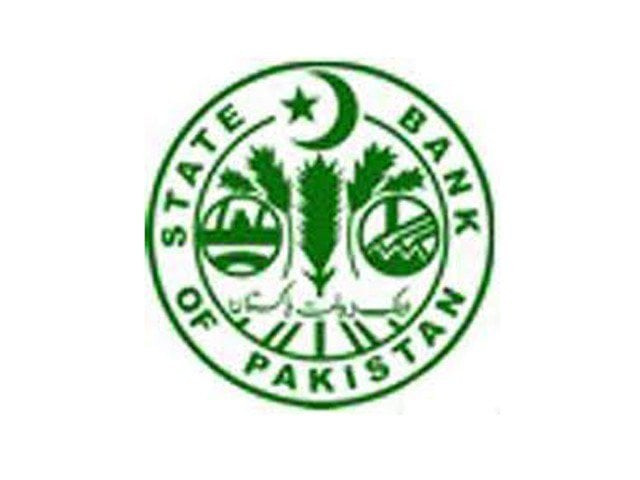Despite higher credit flow, agri-sector encounters big challenges
Crop yields in Pakistan are one of the lowest; research units sit idle

PHOTO: State Bank Pakistan Logo/FILE.
This is not for the first time that the central bank has set an ambitious credit flow target for the agronomy. The target was fixed at Rs500 billion for fiscal year 2015, Rs600 billion for FY16, Rs700 billion for FY17 and Rs1 trillion for FY18.
However, the massive increase in disbursement targets could not help achieve broader objectives in the agricultural sector whose share stands at one-fifth in the $313 billion worth of gross domestic product (GDP) – the size of national economy in FY18.
SBP’s reserves fall below $9.5b as concerns rise
Farm output per hectare has dropped to one of the lowest in the world instead of going up, agricultural research institutes have broadly failed to introduce new seed varieties, mainly for export commodities like rice and orange, and living standard of most of the farmers remains low.
Apart from these, water scarcity and climate change have emerged as latest challenges for the agricultural sector.
According to a recent report drafted by the Pakistan Business Council, the low crop yield has not got any better for a long time and now it has sunk to one of the lowest in the world.
Pakistan produces 3.1 tons of wheat per hectare, which is just 38% of the 8.1 tons produced in France – the world’s best productivity.
Similarly, Pakistan produces 2.5 tons of cotton per hectare, which is 52% of the 4.8 tons produced in China.
Sugarcane yield stands at 63.4 tons per hectare, which is 51% of the 125.1 tons Egypt produces while maize productivity is estimated at 4.6 tons per hectare, 41% of the 11.1 tons France is producing.
In rice crop, Pakistan produces 2.7 tons from every hectare, which is merely 29% of the 9.2 tons produced in the US.
Lacking capacity
On the other hand, most of the agricultural institutes are sitting idle and lack the capacity to come up with solutions to the pressing challenges.
A rice miller complained that research institutes were getting hefty annual budgets, but were incapable of addressing the problems emerging from time to time like climate change.
The time for sowing different crops in Pakistan is changing gradually every year because of the impact of climate change, but relevant research institutes do not give any meaningful guidelines how to cope with the situation.
Besides, the living standard of farmers has continued to remain poor. Most of the time they fail to get justified prices for their produce like sugarcane, cotton and rice.
This comes despite the announcement of minimum support prices for some major crops by the government. And if they manage to sell their harvest, the buyers, mostly millers, do not pay the price on time.
Agriculturists have described higher credit disbursement a good job on the part of the central bank, but the credit flow does not appear enough to fight against odds and the challenges faced by the sector.
Therefore, the government and private sector need to join hands for building the capacity of research institutes, help farmers increase crop productivity and form a hassle-free payment system for the growers.
Sindh Abadgar Board Vice President Syed Mehmood Nawaz Shah praised the central bank for ensuring a smooth credit flow, but said the allocated funds were still insignificant in relation to farmers’ demand.
Foreign exchange: SBP's reserves drop by another $53m, stand at $9.01b
“These funds do not reach all the needy farmers, especially small growers,” he said.
Shah revealed that though Sindh’s share in the total agricultural produce stood at 23%, the province got less than 5% of the credit disbursement.
“The Sindh government has to wake up...play an active role in getting due share in total credit disbursement for the province’s farmers,” he emphasised.
Rice Exporters Association of Pakistan (REAP) Senior Vice Chairman Rafique Suleman suggested that the new government should explore new markets for rice exports, introduce new paddy seeds to increase production, reduce the cost of manufacturing for exports, provide suitable land for establishing industries and do necessary research and development work.
the writer is a staff correspondent
Published in The Express Tribune, August 20th, 2018.
Like Business on Facebook, follow @TribuneBiz on Twitter to stay informed and join in the conversation.



















COMMENTS
Comments are moderated and generally will be posted if they are on-topic and not abusive.
For more information, please see our Comments FAQ